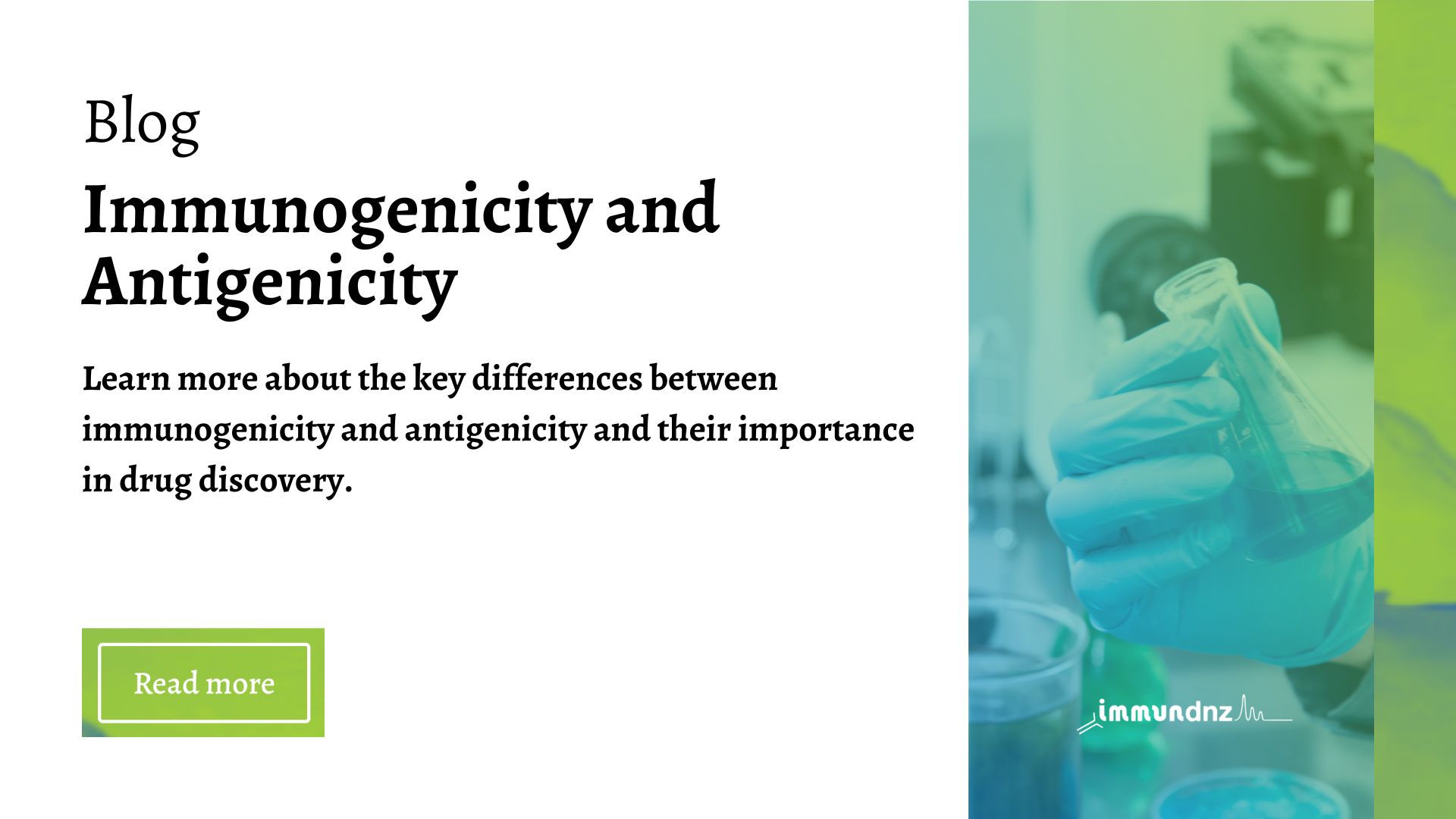Immunogenicity and antigenicity are two fundamental concepts in immunology that, while related, describe different aspects of how the immune system interacts with foreign substances. Understanding these concepts is crucial for fields like vaccine development, immunotherapy, and disease prevention. We will explain here the distinctions and relationships between immunogenicity and antigenicity, exploring their definitions, mechanisms, and practical implications.
Definitions
Antigenicity refers to the ability of a substance to bind specifically to antibodies or T cell receptors. An antigen is any molecule or molecular structure that can be recognized by the immune system, particularly by antibodies, B cells, or T cells. Antigenicity is a property of the antigen itself, indicating its capacity to be recognized by the immune system.
Immunogenicity, on the other hand, is the ability of a substance to provoke an immune response. This means that an immunogenic substance not only can bind to immune receptors (as an antigen) but also can trigger a cascade of immune reactions, including the activation of B cells and T cells, leading to the production of antibodies, memory cells, and other immune responses.
Mechanisms and Components
The mechanisms behind antigenicity and immunogenicity involve several components of the immune system:
1. Antigenicity:
– Epitopes: These are the specific parts of the antigen that are recognized by immune receptors. Each antigen can have multiple epitopes.
– Binding Specificity: For a molecule to be antigenic, it must have regions that can be precisely recognized and bound by antibodies or T cell receptors.
2. Immunogenicity:
– Adjuvants: These are substances that can enhance the immunogenicity of an antigen. Adjuvants help in presenting the antigen more effectively to the immune cells and in stimulating a stronger immune response.
– Antigen Presentation: The process by which antigen-presenting cells (APCs) such as dendritic cells process and present antigens on their surface to T cells is crucial for initiating the immune response.
– Costimulatory Signals: In addition to antigen recognition, T cells require additional signals provided by APCs to become fully activated.
Factors Influencing Antigenicity and Immunogenicity
Several factors influence whether a substance is antigenic or immunogenic:
– Molecular Size: Larger molecules are generally more antigenic and immunogenic than smaller ones. Small molecules, known as haptens, can become immunogenic when attached to larger carrier molecules.
– Molecular Complexity: More complex molecules with diverse structures are more likely to be recognized as foreign and thus are more antigenic and immunogenic.
– Foreignness: The more different a molecule is from the host’s own molecules, the more likely it is to be immunogenic. This is because the immune system is trained to recognize and respond to foreign substances.
– Dose and Route of Administration: The amount of antigen and the way it is introduced into the body (e.g., injection, oral, inhalation) can influence the immune response.
Practical Implications
Understanding the difference between antigenicity and immunogenicity has several practical implications, particularly in the fields of vaccine development and therapeutic interventions.
1. Vaccine Development:
– Designing Effective Vaccines: For a vaccine to be effective, it must contain antigens that are not only capable of being recognized by the immune system (antigenic) but also capable of inducing a strong and lasting immune response (immunogenic). Researchers often use adjuvants to boost the immunogenicity of vaccine antigens.
– Subunit Vaccines: These vaccines use specific antigenic parts of a pathogen (like proteins or polysaccharides) rather than the whole pathogen. Ensuring that these subunits are immunogenic is crucial for vaccine efficacy.
2. Allergy and Hypersensitivity:
– Allergens: Substances that cause allergic reactions are antigenic because they bind to specific antibodies. However, their ability to induce an exaggerated immune response (hypersensitivity) involves their immunogenic properties.
– Desensitization Therapies: These therapies aim to reduce the immunogenicity of allergens by gradually increasing exposure to them, thereby inducing tolerance.
3. Autoimmunity:
– Self-Antigens: In autoimmune diseases, the immune system mistakenly targets the body’s own antigens. Understanding how these self-antigens can become immunogenic is crucial for developing therapies that can modulate the immune response.
4. Cancer Immunotherapy:
– Tumor Antigens: Cancer cells often express abnormal proteins that can be antigenic. Immunotherapy aims to enhance the immunogenicity of these tumor antigens to stimulate the immune system to attack cancer cells.
Research and Development
Research into the differences between antigenicity and immunogenicity continues to evolve, with several key areas of focus:
– Identifying New Antigens: Advanced techniques in genomics and proteomics are being used to identify potential antigens that could be used in vaccines or therapies.
– Enhancing Immunogenicity: Researchers are exploring new adjuvants and delivery systems that can boost the immunogenicity of antigens.
– Predicting Immune Responses: Computational models and machine learning are being used to predict which antigens will be immunogenic, helping to streamline the development of new immunotherapies.
Conclusion
In summary, while antigenicity and immunogenicity are related concepts, they refer to different properties of substances interacting with the immune system. Antigenicity is about the specific recognition and binding by immune receptors, whereas immunogenicity is about the ability to induce an immune response. Both properties are essential for effective immune function, with significant implications for vaccine development, allergy treatments, autoimmune disease management, and cancer immunotherapy. Understanding these differences helps in designing better therapeutic strategies and improving overall health outcomes.


